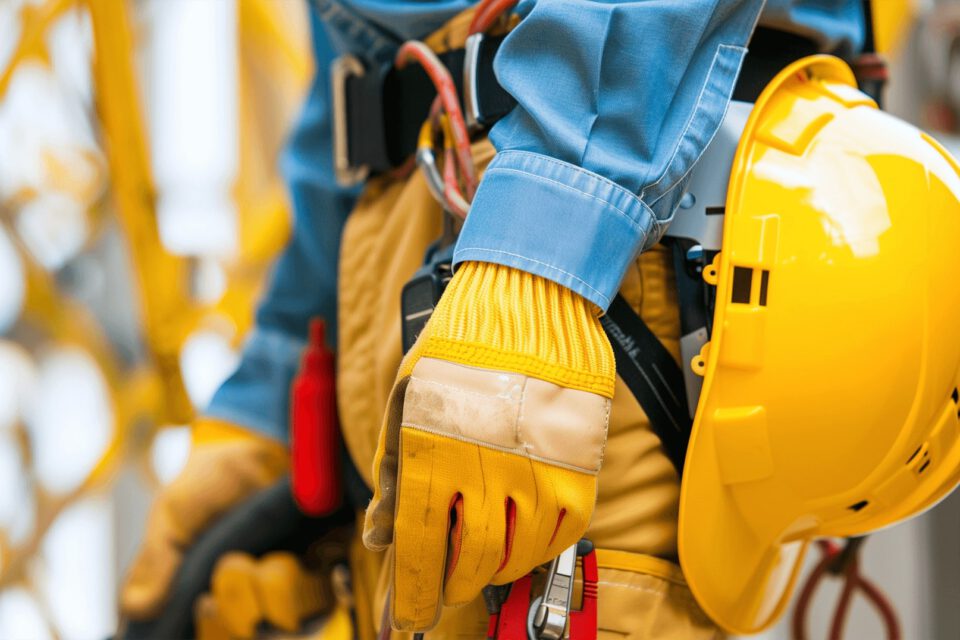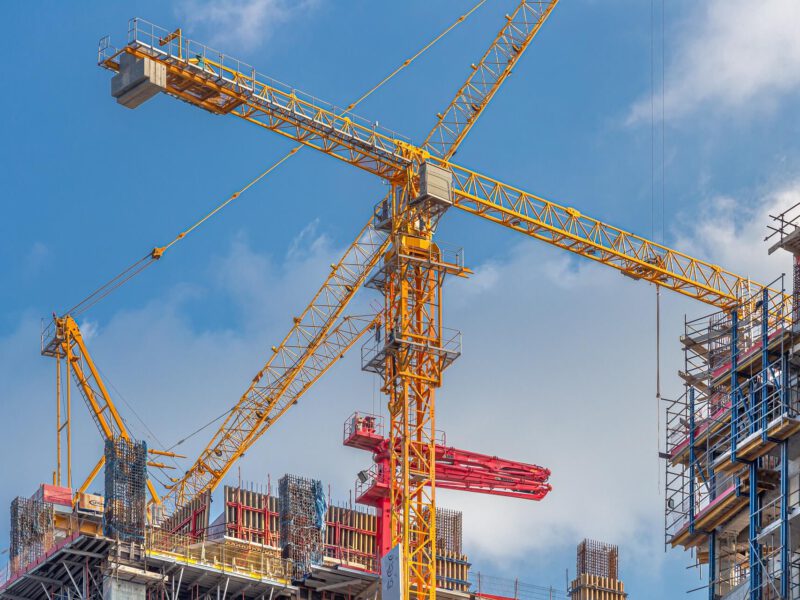
Occupational safety
The health of every employee is a company’s most valuable asset. For this reason, occupational health and safety should be a cornerstone of the corporate structure.
We can assist you with implementing this and would like to present our range of services to you. If you have any questions, please feel free to contact us by telephone or email at any time.
The assessment of causes, events, incidents and near misses in accident analyses often only identifies the obvious causes. Human error is frequently highlighted as the main cause. For this reason, most accident analyses do not provide valuable insights into shortcomings in processes or working methods. Holistic accident analyses (also known as root cause analyses), on the other hand, focus on the underlying causes of accidents in order to eliminate problems at their root and find sustainable solutions. This makes it possible to learn from the accident and derive improvements and measures to prevent it from happening again.
An accident analysis should include a methodical approach:
- Gather information
- Conduct interviews
- Compile and document a description of the accident
- Identify causes
- Define measures
In addition, employers must record accidents at work and take the necessary protective measures based on the risk assessment that has been carried out. We create and implement company-specific accident statistics for you with the aim of identifying accident blackspots and developing protective measures or testing their effectiveness.
We provide you with an external safety specialist or safety engineer to support you in:
- designing a company-specific organisation for management activities
- fundamental measures for work design – behavioural prevention
- risk assessment
- analysis after incidents (accidents, critical incidents)
In addition, we support management, executives and all employees with company-specific advice.
We all constantly carry out risk assessments, even if we are not always aware of it. Recognising and assessing risks is part of everyday life, just like eating and drinking.
While we can draw on our personal experience in our private lives, the risks in the working environment are not always apparent to all of us. The legislator therefore requires employers to systematically identify all hazards associated with work by means of a risk assessment, to define appropriate measures and to provide employees with sufficient instruction. Risk assessment is therefore a fundamental tool for occupational health and safety and forms the basis for all further work related to the humane design of workplaces.
The aim is to identify accident and health hazards for employees or uninvolved third parties and to initiate appropriate protective measures. Hazards should be avoided as far as possible or, if this is not possible, reduced to an acceptable and controllable risk.
Input:
(measurements, operating instructions, safety data sheets, regulations and rules, etc.)
Output:
(operating instructions, PPE, training, occupational health precautions, labelling, etc.)
We, the HSE engineers, support you in developing a company-specific risk assessment. Together, we develop a practical standard that gives you an overview of the main hazards in your company and suggests appropriate measures. The systematic approach to analysing, evaluating and developing proposed measures provides you with a sound basis for your risk assessment.
As a summary of the associated risk assessment, the operating instructions are the document for employees and third parties on site.
The operating instructions serve as a guide and aid for the persons concerned when handling work equipment or hazardous substances.
We support you in creating and updating your existing operating instructions.
The employer must provide employees with regular, sufficient and appropriate training on health and safety at work. Training must take place during working hours and without any reduction in pay for the employee.
Initial training forms the basis for all further training and provides information on the basic rules of occupational health and safety. Initial training must be provided upon recruitment, when there are changes in the scope of duties and when new work equipment or technologies are introduced, and must be repeated regularly.
We offer the following support in the areas of occupational health and safety, fire protection, environmental protection and energy, depending on your needs:
- Preparation of training documents
- Review and compilation of all necessary training materials
- Creation of a training matrix
- Implementation of employee training
The majority of accidents can be explained by incorrect behaviour rather than technical shortcomings.
To this end, safety awareness should be created among all employees. The time required is significantly higher and may seem costly at first, but ultimately it is a self-perpetuating process that can be of considerable value to a company.
The Behaviour Based Safety (BBS) method has emerged as a suitable means to this end, designed to bring about a change in employee behaviour in the area of occupational safety. It is a process that creates a safety partnership between management and employees across all areas, continuously focusing people’s attention and actions on their daily safety behaviour and that of others.
Companies must ensure that occupational safety is continuously improved within their organisation. Safety inspections are the best way to determine whether occupational safety measures are actually effective.
During regular inspections, we identify and review deficiencies, problems and sources of danger in your company.
Furthermore, during regular follow-up inspections, the documentation is updated and the deficiencies are effectively rectified. A comparison of the target and actual status is an essential part of this process.
The inventory is the most important method for gaining an on-site impression of the company. It should be carried out thoroughly and in a structured manner. In addition to technical assistance, it is advisable to consult another internal contact person.
This person is familiar with the daily routines and technical equipment and can provide more detailed information if necessary.
We offer a detailed inventory of the company, buildings and equipment with regard to occupational safety, fire protection and environmental protection.
The results are therefore recorded in writing in the inventory and supplemented with pictures. The focus here is on defect- and solution-oriented consulting.
In order to realise cost savings, you need well-organised support that is tailored to the needs of your company.
With the help of our needs analyses, you can find out how well your company is already performing in the areas of occupational health and safety, fire protection and environmental protection (HSE: Health, Safety, Environment).
Based on the results, we can develop a concept for your company that not only meets your exact needs, but also picks up where your existing measures leave off.
In this way, we can show you the causes of possible planning errors and/or deviations throughout your entire operation.
The advantages of using external companies are very diverse from an economic point of view. However, this flexibility also entails risks for the client, as external companies usually work under considerable time pressure, without any local knowledge and sometimes in hazardous working areas. In addition, they usually have to adapt very quickly to the new and unfamiliar working environment with the corresponding working conditions and work processes.
It is therefore essential to define and coordinate safety standards and regulations and to draw up appropriate contracts. This can help to avoid legal and economic difficulties.
As a client, you should always insist that only suitable, sufficiently qualified and trained personnel are allowed to work in the operating company in compliance with all legal requirements.
We support you in implementing specific occupational health and safety regulations in the contractual services with regard to the registration of employees when entering the company premises, special sources of danger, employee training on health and safety, behaviour in normal and emergency situations, operational responsibilities and authority to issue instructions.
We also offer the following services:
- Creation of external company regulations
- Introduction of external company management
- Support in instructing the person responsible for the order
- Support in briefing the persons responsible for external companies
- Support in coordinating and monitoring activities
The employer bears fundamental responsibility for occupational health and safety in the workplace. In larger companies, it is necessary for the employer to delegate responsibility to operational supervisors (transfer of duties). However, not everyone is aware of their rights and, above all, their obligations.
We provide you with the legal background to the transfer of employer obligations and support you by training managers.
In addition, we show you how duties are transferred and what criteria this delegation must meet in order to be legally effective.
The following questions, for example, are examined:
- Why are entrepreneurial responsibilities transferred?
- What responsibilities does the entrepreneur bear?
- What is the difference between the responsibilities of an entrepreneur and those of an agent?
- What is the difference between a planner and an operator?
- Where does responsibility lie with the operator and where with the owner?
- What exactly do the specific operator responsibilities entail?
- Why is risk assessment so important in this context?
- What consequences can arise?
In order to ensure comprehensive occupational health and safety in the many industrial companies or in the petrochemical industry, most companies also require their partners/external companies to provide evidence of their knowledge of safety, health and environmental protection (SGU).
SCC (Safety Certificate Contractors) management is ideal for all companies that work as external contractors or subcontractors. SCC is the key to ensuring a uniform, internationally recognised safety standard.
To enable your company or business to actively shape its safety, health and environmental policy, our goal is to provide managers and employees with the necessary knowledge about safety-conscious behaviour and to deepen their understanding of this topic. This initially involves the fundamental aspects of the SCC safety standard.
In addition, in-depth knowledge of safety management in accordance with the SCC certification system is imparted.

